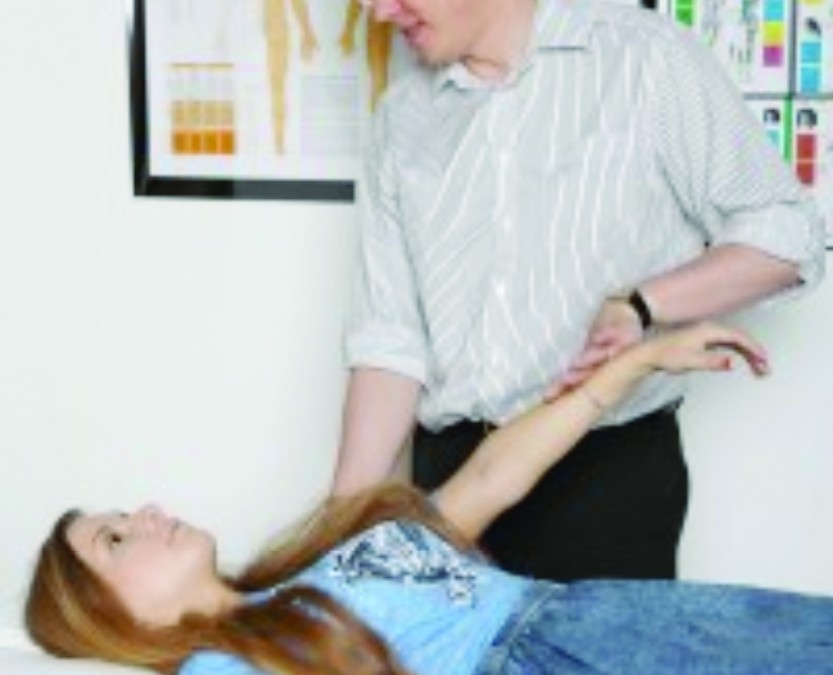This month we look at one of our new therapies: Systematic Kinesiology
Kinesiology uses knowledge of both Eastern and Western techniques for assessing and correcting imbalances in the body.BackgroundIn the 1960s, George Goodheart, an American chiropractor, discovered a direct relationship between muscle strength and the functioning of the meridian system of the body. Meridians are a concept of Chinese medicine and are lines or channels along which life energy (known as Chi) is considered to flow. These meridians are mapped along the surface of the body but also flow through the organs to which they are related; for example, the Liver meridian, Small Intestine meridian, etc. Although the meridians are referred to individually, they interlink with each other and any imbalances in the flow of energy throughout this system will prevent the body from functioning at its best.
Key locations along each meridian are used in Chinese medicine to control the energy flowing along and between meridians. These are referred to as acupuncture points, though in kinesiology finger pressure is used to work with points rather than needles!
Goodheart worked with an acupuncturist and found that if a particular meridian is sedated using acupuncture, certain muscles are weakened, these muscles being directly related to that meridian. For example, the thigh muscles (quadriceps) are linked to the Small Intestine meridian; the biceps are linked to the Stomach meridian; the latissimus dorsi (the “lats”) are linked to the Spleen meridian.
He realised that through these associations, the strength of muscles could be used to evaluate whether each meridian is in balance or not. In fact, due to the link between muscle, meridian and organ, a muscle that tests weak indicates an imbalance somewhere in the circuit of those three components. (In the case of the latissimus dorsi / Spleen meridian, this also shows up imbalances in the pancreas, as well as the spleen.)
Goodheart found that imbalances in the meridians could be corrected by a variety of means, such as rubbing points on the body associated with stimulating lymphatic drainage from an organ, lightly holding points that stimulate blood flow, rubbing a point on the spine that stimulates the nerve supply, holding or tapping acupuncture points to stimulate meridian energy flow, or rubbing the ends or belly of the affected muscle itself.
Putting the techniques of assessment and corrections together, he called his new method Applied Kinesiology, and further research has expanded the various techniques of assessment and corrections.
Kinesiology todaySince then, many derivatives of the parent system have arisen, each with slightly differing ways of working with the body, e.g. focusing on biochemistry, or emotional issues. Arguably, Systematic Kinesiology is the most closely related to Applied Kinesiology and derives from the latest research in the parent system. Regardless of the type of kinesiology practised, all forms of kinesiology use muscle testing to evaluate the status of the body via the meridian system and (since muscles are controlled by the brain) the nervous system.
The corrections required to restore balance to the body are also assessed individually during an appointment. As previously mentioned, these can involve light or deep massage, holding or tapping acupuncture points, tracing the path of meridians just above the body, gentle manipulation of the pelvis, spine or head, and occasionally nutritional supplementation. Muscle testing is used to identify those corrections specifically required to restore the body to balance, and only those corrections identified as required by the body are then applied. Once in balance, all muscles of the body will test as equally ‘strong.’
To summarise, kinesiology assesses patterns of imbalance in the body and what the body needs to be restored to balance.
So what does that mean in practise?
Different types of stress that we encounter in our daily lives can disrupt the nervous system and/or energy flow in certain meridians. Kinesiology is not diagnostic in the medical sense but by finding patterns of imbalance associated with stress, can be used for almost any condition. For example:
• physical pain
• emotional stress
• organ imbalances such as bowel dysfunction, menstrual problems, etc.
• effects of toxicity such as food sensitivities and intolerances
• postural and movement problems
• muscle function
As muscles are controlled by the brain and spinal cord reflexes, kinesiology also evaluates the effects of stress on the brain / nervous system. This means it can also be helpful for:
• co-ordination problems
• problems with reflexes and development in children
• sensory imbalances
• fears, phobias and other limiting behaviours / belief patterns
Perhaps most importantly, kinesiology is used to help maintain good health. According to Traditional Chinese Medicine, when the body’s energy is flowing freely throughout the meridian system, the body can function at its optimum state of health.

